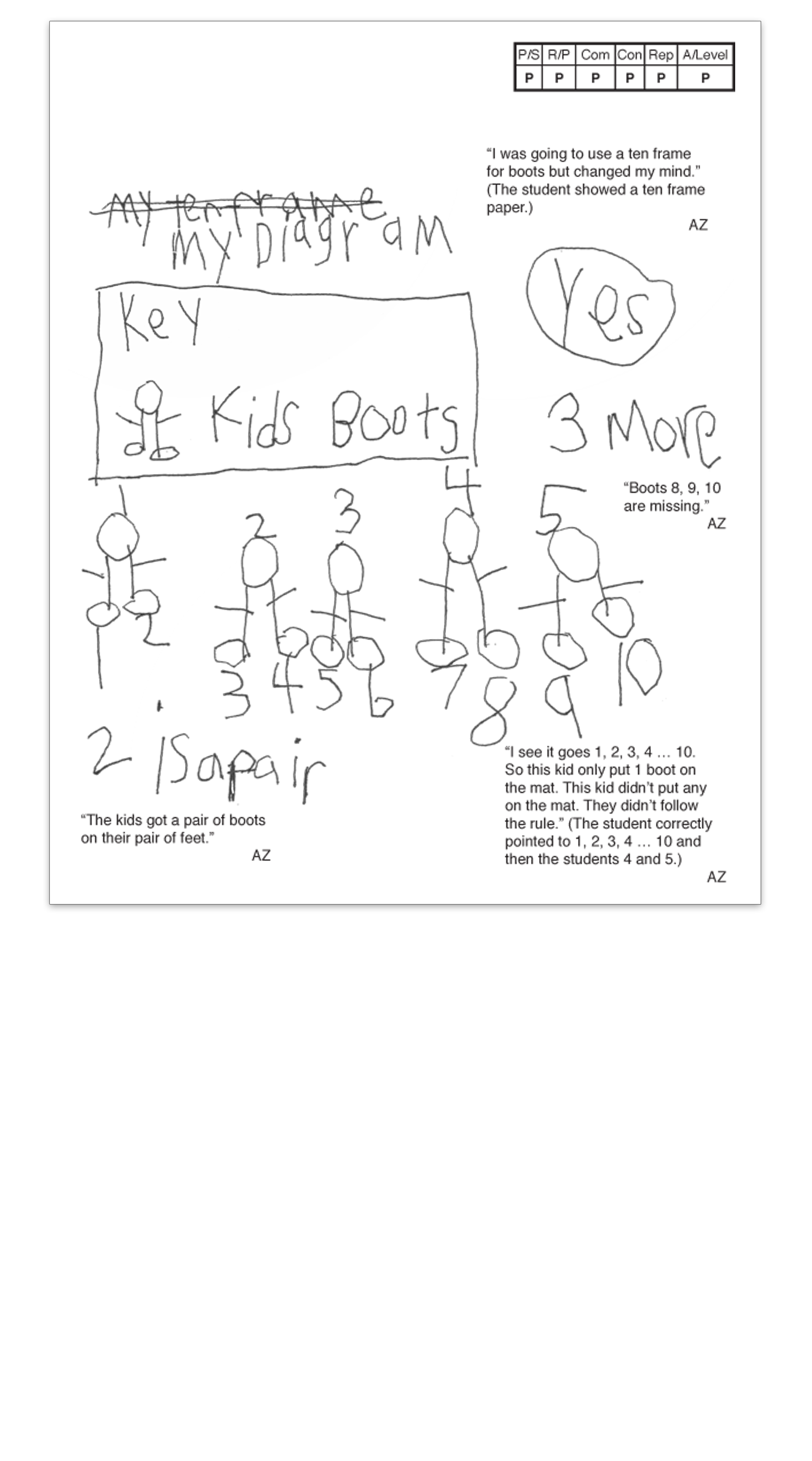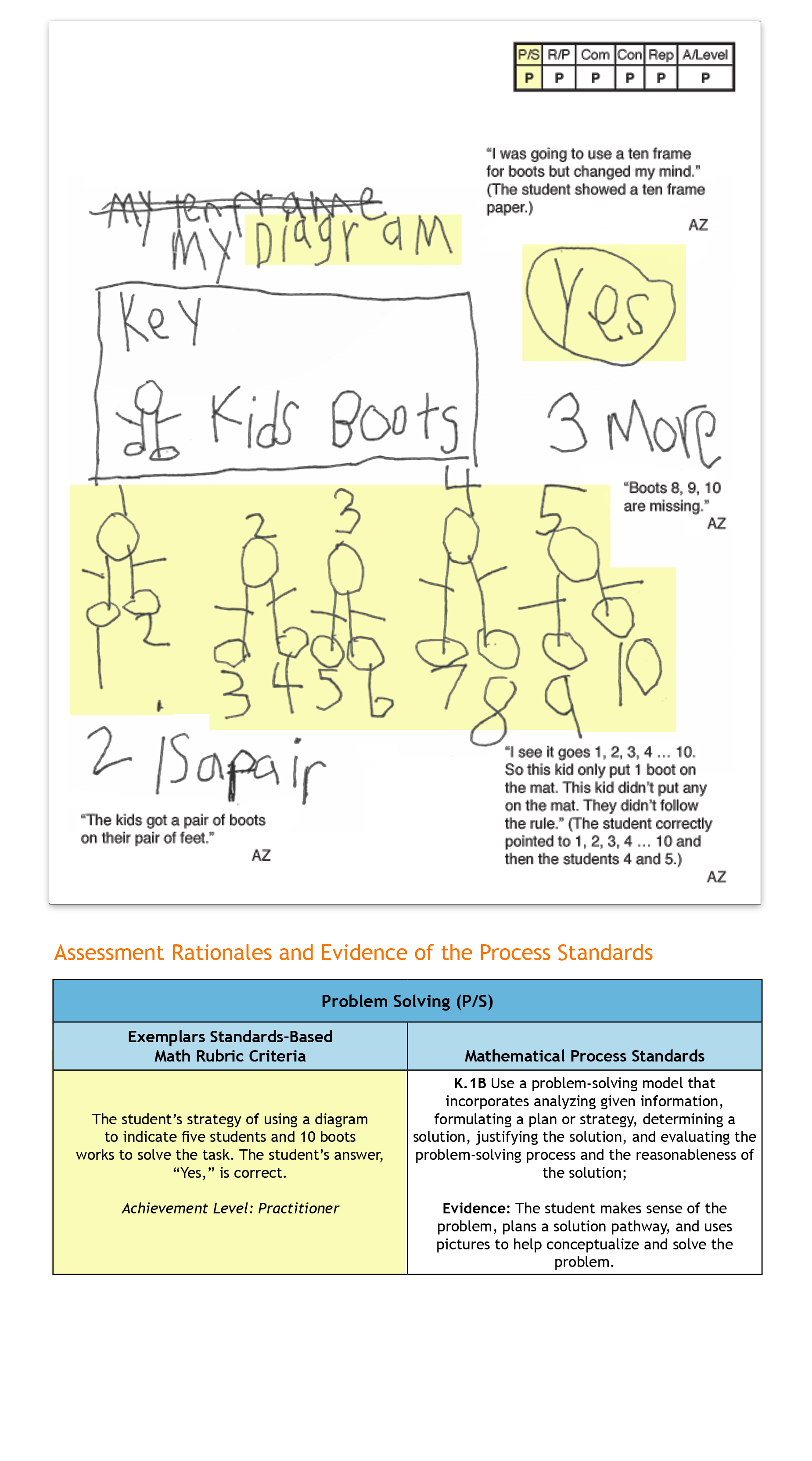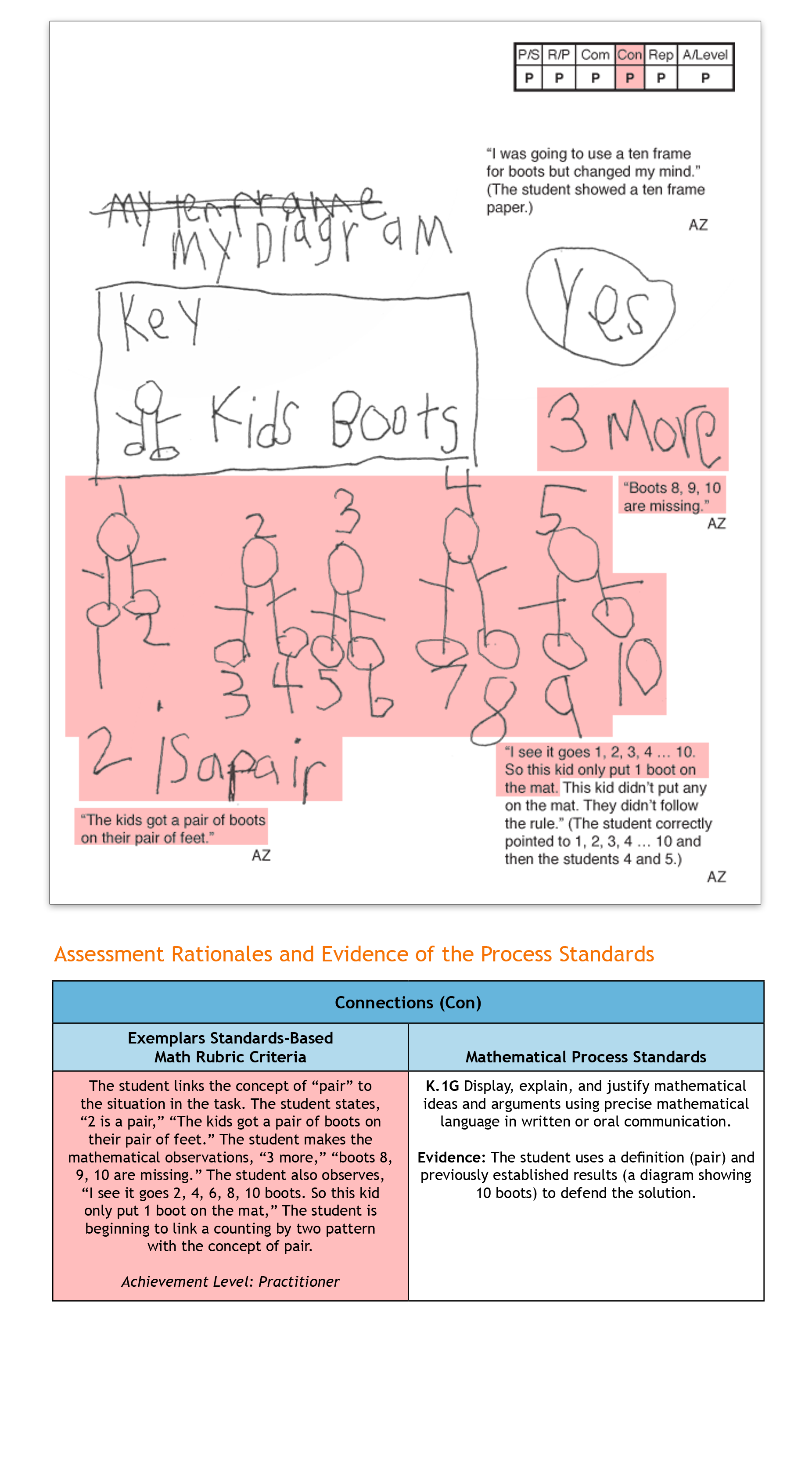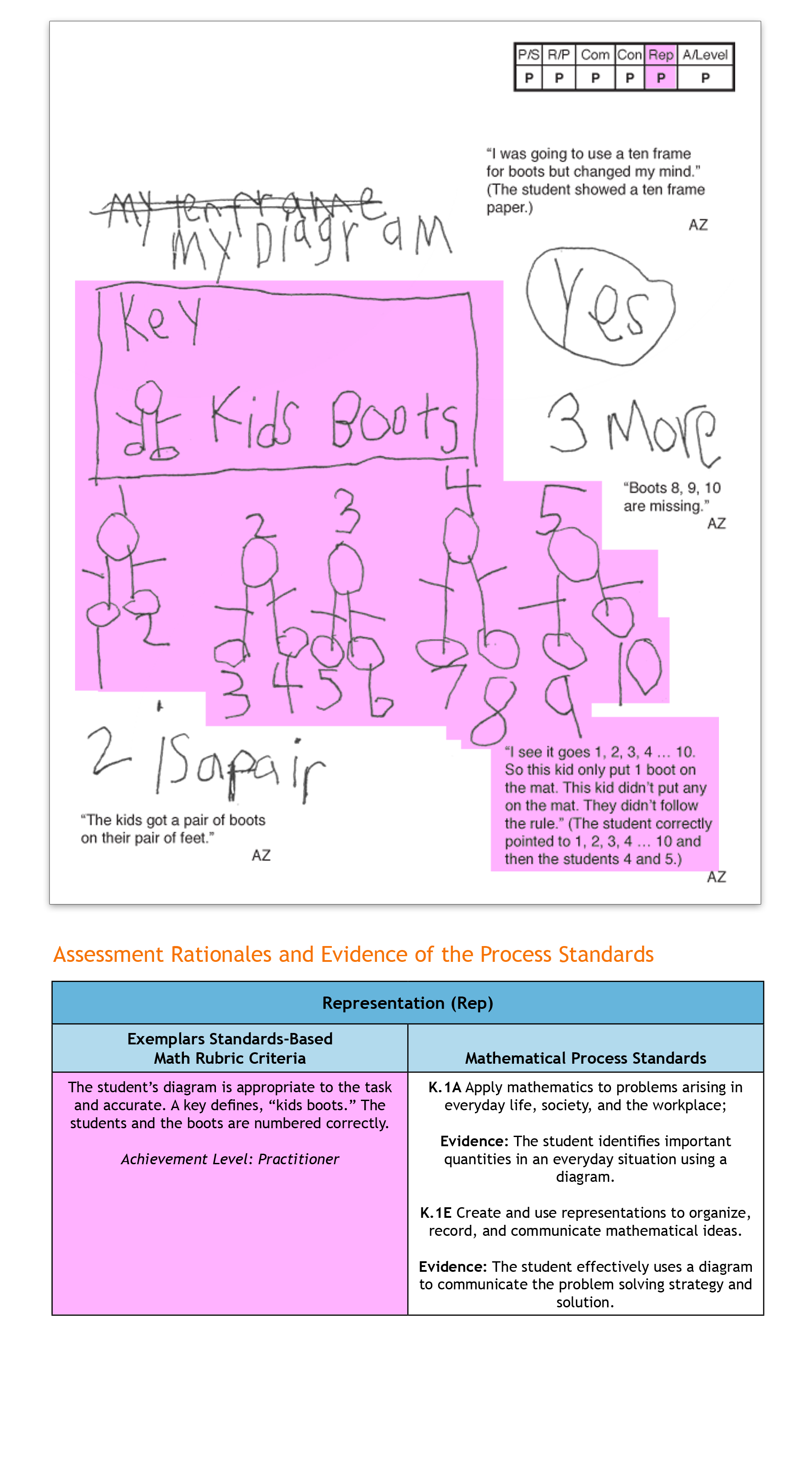Supporting the TEKS Mathematical Processes with Exemplars Performance Tasks and Rubric at the Kindergarten Level

Written By Exemplars Math Consultants: Deborah Armitage, M.Ed. and Dinah Chancellor, M.Ed.
Blog Series Overview:
Exemplars performance-based material is a supplemental resource that provides teachers with an effective way to implement the Math TEKS through problem solving. This blog represents Part 1 of a five-part series that features a problem-solving task linked to a Unit of Study for the Math TEKS and a student’s solution in grades K–5. Evidence of all seven Mathematical Process Standards will be exhibited by the end of the series.
The Exemplars Standards-Based Math Rubric allows teachers to examine student work against a set of analytic criteria that consists of the following categories: Problem Solving, Reasoning and Proof, Communication, Connections and Representation. There are four performance/achievement levels: Novice, Apprentice, Practitioner (meets the standard) and Expert. The Novice and Apprentice levels support a student’s progress towards being able to apply the criteria of a Practitioner and Expert. It is at these higher levels of achievement where support for the Mathematical Processes is found.
Exemplars problem-solving tasks provide students with an opportunity to apply their conceptual understanding of standards, mathematical processes and skills. Observing student anchor papers with scoring rationales that demonstrate the alignment between the Exemplars assessment rubric and the Math TEKS can be insightful for educators. Anchor papers and scoring rationales provide examples of what to look for in your own students’ work. Examples of Exemplars rubric criteria and the Mathematical Processes are embedded in the scoring rationales at the bottom of the page. The full version of our rubric may be accessed here. It is often helpful to have this in hand while reviewing a piece of student work.
Blog 1: Observations at the Kindergarten Level
The first anchor paper and set of assessment rationales we’ll review in this series is taken from a Kindergarten student’s solution for the task “Boots.” You will notice that the teacher has “scribed” the student’s oral explanation. This method allows teachers to fully capture the mathematical reasoning of early writers.
“Boots” is one of a number of Exemplars tasks aligned to the Counting and Cardinality Unit designed by Exemplars for the new Math TEKS. This task could be used toward the end of the learning time allocated to this Unit. Prior to “Boots” being given, students have already completed a number of tasks with questions that state, “How many ears?”, “How many shoes?”, “How many balloons?”, etc. “Boots” gives students an opportunity to bring a stronger understanding of the concept how many to their solutions.
Kindergarten Task: Boots
Five students wear boots to go outside for recess. When the students come in from recess they must put all boots on a rubber mat to dry. The teacher counts seven boots on the mat. The teacher thinks some boots are missing. Is the teacher correct? Show and tell how you know.
Task Alignments
The Counting and Cardinality Unit involves understanding numbers and how they are used to name quantities and to answer questions, such as:
- How many balls is the clown juggling?
- Do you have enough cups for each member of your group to have one?
The TEKS standards covered in this Unit include K.2 Numbers and Operations:
- K.2A count forward and backward to at least 20 with and without objects.
- K.2B read, write, and represent whole numbers from 0 to at least 20 with and without objects or pictures.
- K.2C count a set of objects up to at least 20 and demonstrate that the last number said tells the number of objects in the set regardless of their arrangement or order.
- K.2D recognize instantly the quantity of a small group of objects in organized and random arrangements.
Mathematical Process Standards: K.1A, K.1B, K.1C, K.1D, K.1E and K.1G









